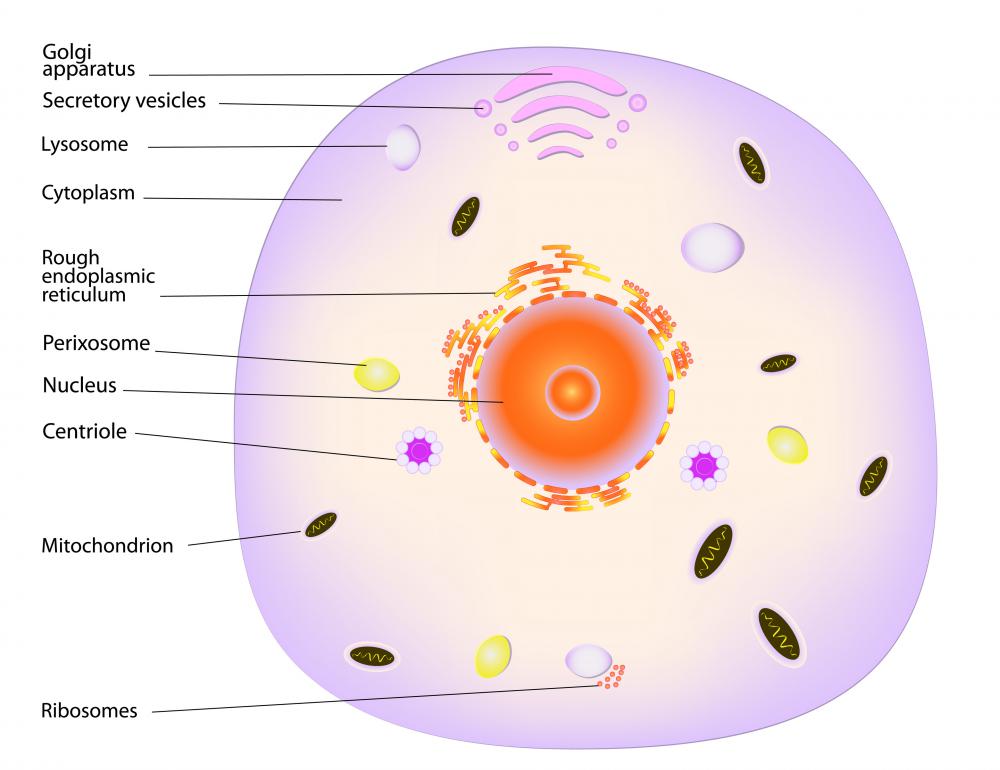At WiseGEEK, we're committed to delivering accurate, trustworthy information. Our expert-authored content is rigorously fact-checked and sourced from credible authorities. Discover how we uphold the highest standards in providing you with reliable knowledge.
What is ATP Synthase?
An ATP synthase is any enzyme, or catalytic protein, that is primarily involved in the synthesis of adenosine triphosphate (ATP), one of the most important units of energy storage in the biological systems. Different varieties of ATP synthase appear in different types of cells and organelles as well as in entirely different organisms. In plants, for example, CF1FO-ATP synthase is present in the thylakoid membranes of chloroplasts, which are primarily responsible for photosynthesis. In animals, on the other hand, F1FO-ATP synthase is present in the mitochondrion, the organelles responsible for energy production. Despite these differences in type and location, the core components of the enzyme tend to be quite similar in all organisms.
As indicated by the names of different types of the protein, there are two primary subunits to ATP-synthesizing enzymes, FO and F1. The FO subunit — "O" not "zero" — is so named because it binds to oligomycin, which is essential for some aspects of ATP synthesis. This part of ATP synthase is embedded in the membranes of mitochondrion, while F1, which simply stands for "Fraction 1," is inside the mitochondria's matrix. It is possible that these subunits were, at one time, completely separate proteins that have, over the course of evolutionary history, been integrated into one structure that is highly prevalent in nature.

The process of ATP synthesis requires some energy, and the ATP synthase enzyme is equipped to meet this need. The FO subunit uses a proton gradient to produce the energy necessary for the actual synthesis of ATP, which occurs in the F1 subunit. A proton gradient is a type of electrochemical gradient in which potential energy caused by charge differences across a membrane is used to fuel various biochemical processes. Sometimes, the proton gradient is actually the end goal; in these cases, ATP may actually be consumed to provide the necessary energy.

The structure and function of ATP synthase is nearly the same in all organisms. Different subunits are sometimes involved, and different numbers and arrangements of the subunits are sometimes used, but at its core, the protein domains and biochemical processes involved are very similar. This similarity makes ATP synthase interesting from an evolutionary perspective. The fact that the enzyme has been so well preserved in most organisms throughout history implies that the structures were developed very early on in evolutionary history. Biologists believe that the two F subunits that compose the core of the enzyme actually served largely unrelated functions initially, but were eventually able to bind together to form the highly-useful synthase.
AS FEATURED ON:
AS FEATURED ON:













Discuss this Article
Post your comments